The end of march saw a long weekend and the opputnity to do some work around the QTH. I wanted to make some progress on getting things a bit tider and also migrating the eggbeaters from the current trying/temporary location to up on the main mast. This would take quite a bit of physical effort, so was best done in stages and over a couple of days that the east bank holiday gave me.
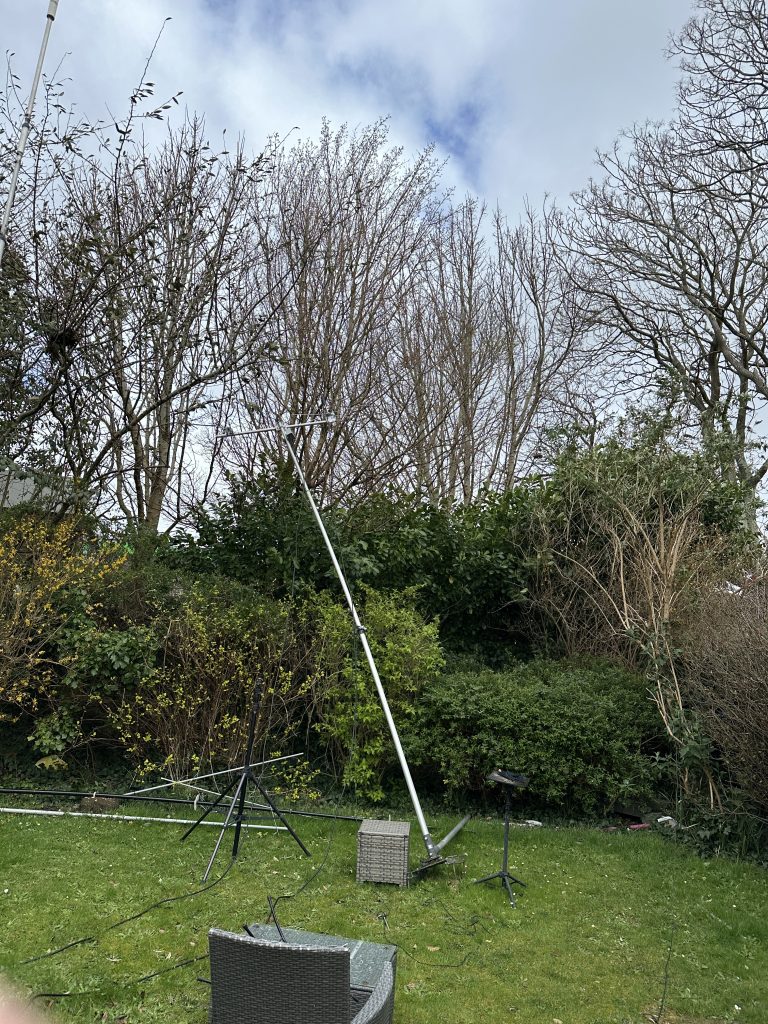
The high levels of rainfall and wind combined to see that the egg-beaters fell victim to high winds, even with heafty guying stake pins and the tilt base, the soft ground wasnt able to hold the egg beaters. Thankfully no damage done and I was soon securing and lowering the eggbeaters to take them off their ‘temporary’ home.

I had breaks and a nice time out in the sunshine, quite unusual for a English bank holiday weekend, but it was nice to get out and about locally, we didnt venture too far as to avoid the masses travellign miles to get to Bourenmouth. By the end of the day I had main mast down, and the egg beaters ready to put up. I was planning to put a mast-head preamp for the vertical, but high SWR meant I had to leave it out this time, I will be investigating and probably sending back to the vendor for repair.
Day Two

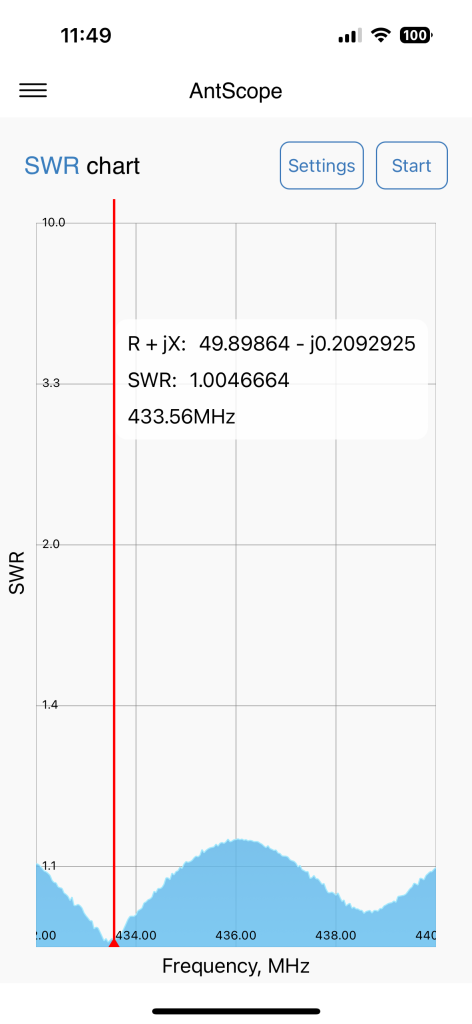
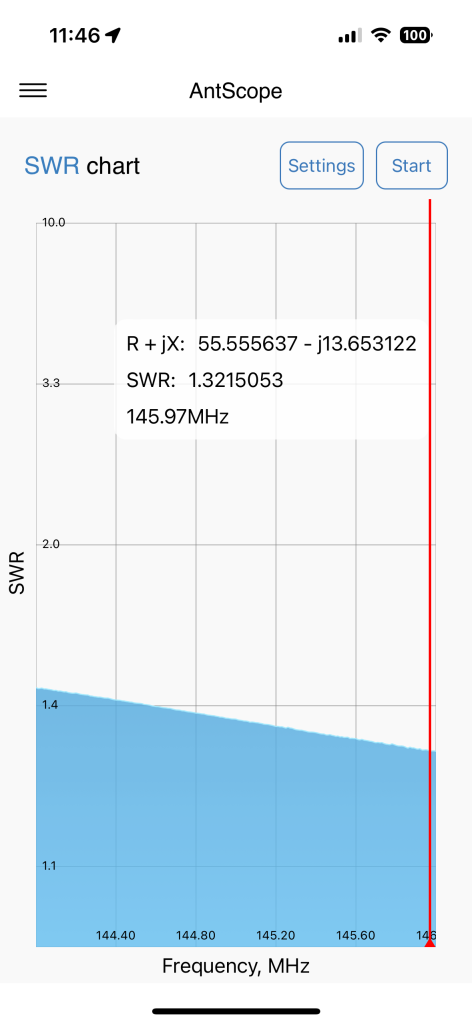
Day Two I got the Diamond X-30 on the very top of the mast, its is considerbly lighter than the X-7000 and even at half height I was able to get into my favourite 2m and 70cm gateway/repeaters (poole & southampton). I then set about putting the eggbeaters onto the mast.
Initially I put them on a lower (4th section of mast ) but found this too low, so I re-attached the egg beaters to the 3rd section. With plenty of prep I was able to get the egg beaters on and the use of the ratchet spanners really helped in securing the egg beaters both times to the mast. When your a meter up on a thin walking gantry, keping organized is essential and having things to hand ! Sure enough I was soon able to get the eggbeaters and the 70cm mast head up all setup. I put the new LMR400 on the antenna and tested from the base, then extended to the shack, the SWR results where satisifactory at around 2-3 meters off the ground.
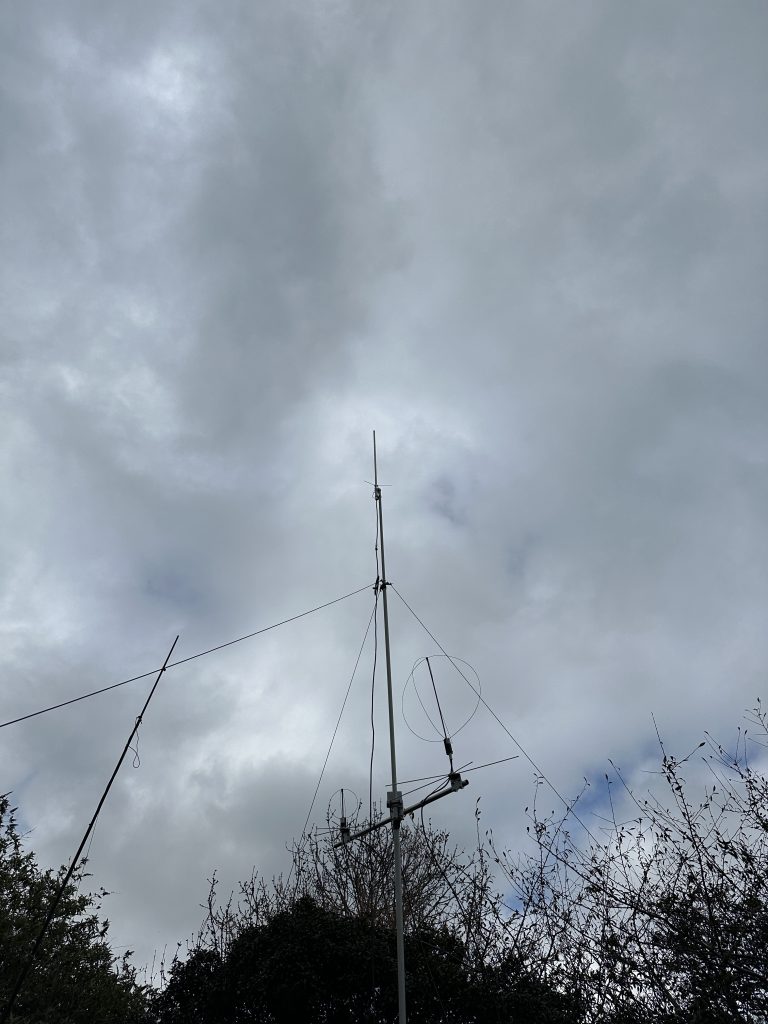
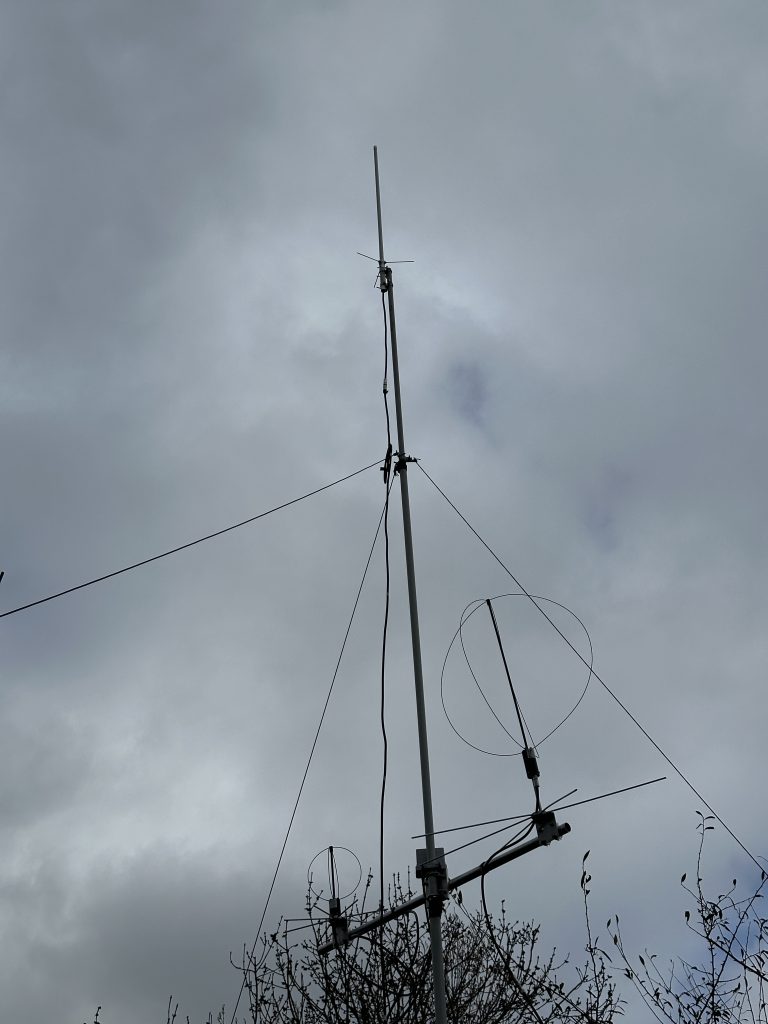
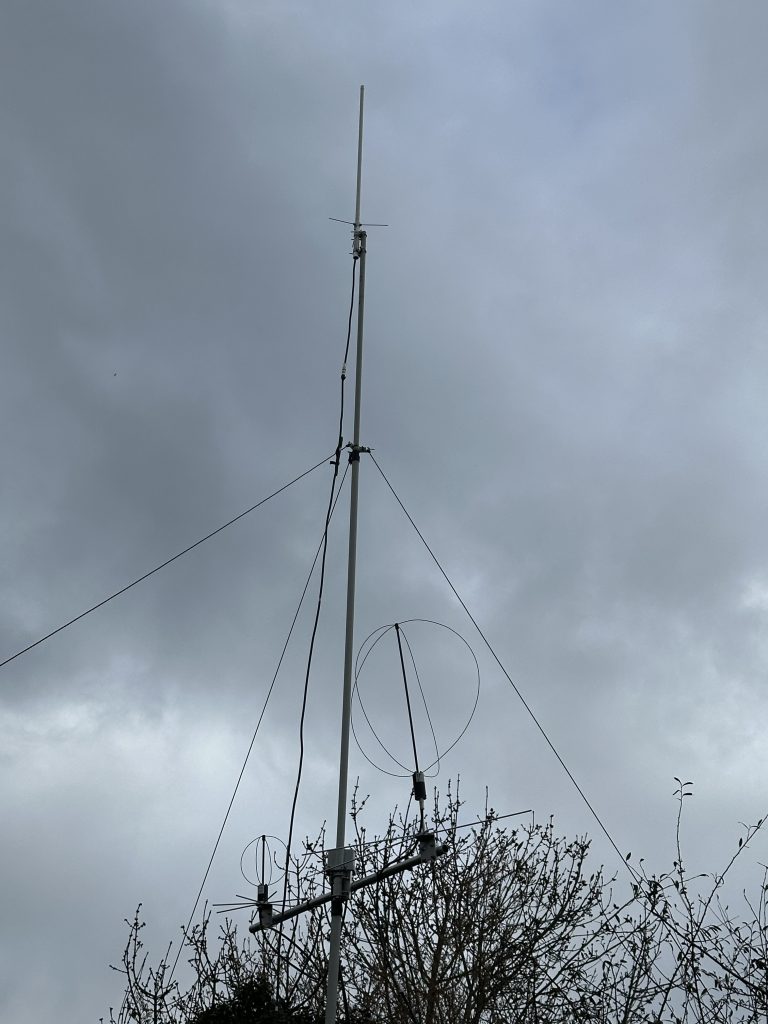
Day 3 (Easter Monday)
Having tired myself out the previous day, it was now time to get the antennas up as high as I was comfortable with to start with. This mast will go up to 40ft in the the air, currently I have it at about 33ft (minus one section) – I saw a previous video where I had just the X50 on the mast and fully extended to 40ft, so know I can rig the mat to get higher, but for today I was pushing up to 33ft and seeing how the antenna done. I was higher than in the corner on the temporary mast and had a much clearer line of sight in most directions. The additon of better quality LMR400 probably helped with less signal loss back into the shack and into the antennas as well.
I started out by playing with HRD and the Sat Mode, the UI is really simple and easy to use for HRD and I like the graphics of the sat passes and the real time pass graphics.

The trouble i had with HRD is that its very intrusive to the IC9700, it near enough ‘locks’ the radio, even with the ‘manual’ frequency change selected, it would drop / loose the connection to the radio. I imagine the CAT signals between HRD + IC9700 are causing some conflict. Also I found that whilst eaiser to program, it wasnt perfect. THe doppler was good and alot of sats worked perfectly, but the linear sats, where a spectrum of frequncys are used during a pass, seemd more difficult to use. I would get up from my chair to tune the radio manually and then I was able to track the QSO’s, which was very exciting just to hear new and strong signals coming in.
I then tried to track/use LILACSAT-2, the satellite passed near enough right over, so should of been very clear to hear, and others on the satelitte tracking pass had heard it that day. This got me wonder if the tracking/frequencies was good for all satelllites. I turned my attention to SatPC32 – its UI is no means as ‘friendly’ or ‘good looking’ as HRD, but once the technical learning is done, it really does to work much better.

With some time editing the DOPPLER.SQF and SUB_TONE.SQF I done CAT control via SatPC32 and visuals via HRD. This for me a a nice setup, as i could visually see the future passes and also have the right modes / doppler from SatPC32.
Day – Back to work and in the Shack
I wanted to try something that I was unable to do due to the weak signals from the previous location, so the APRS digipeater on the ISS was a good target. The iSS Crossband repeater gets VERY busy, but I reall enjoy listening to it, but I actually wanted to try out using the ISS from my egg beaters. This wasnt possible before as the APRS packets would be corrupted/too weak to decode.
I was very happy that once I had tuned into 145.825 FM-D I was able to receive APRS packets as clear as day, and unusually the ISS had several passes today, making the chance of actually working the ISS digipeater quite reasonable.
To start with I didnt do any special config for Direwolf, just a standrd 1200BPS and listen / send on the correct audio devices. This saw alot of packets correctly decoded. As I had used APRS before, my favourite, and free/donations is Pinpoint APRS software. I downloaded this and connected it to Direwolf. Sure enough the packets being decoded appeard on the map all across Europe in real time ! It was really amazing to see how well the egg beaters in their new postion was doing, and even on 2m where no mast-head amp was in place.
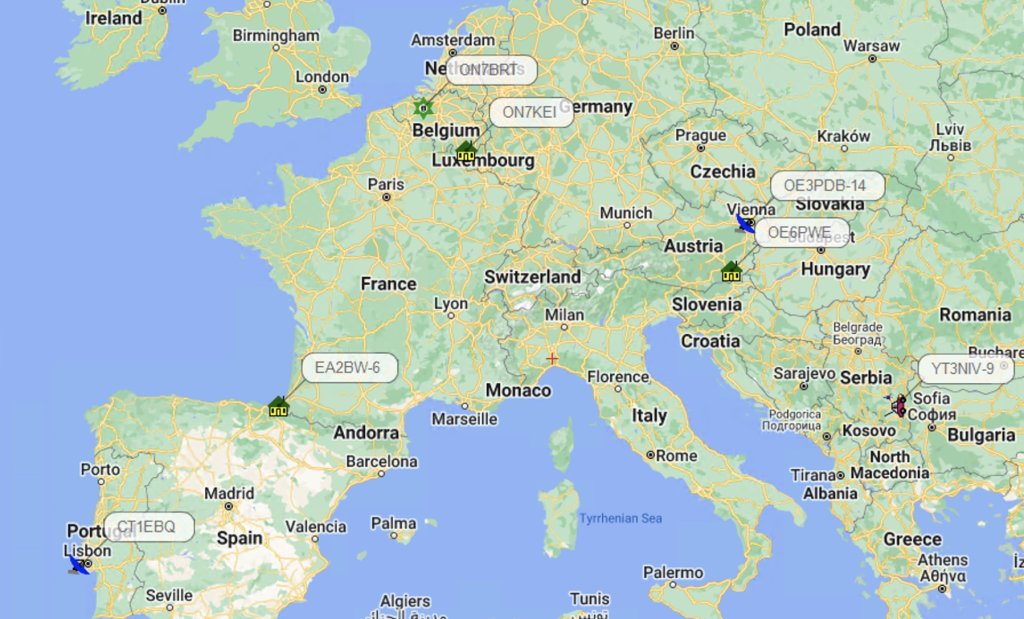
As I continued to work thru the day, I enjoyed how each pass of the iSS brought in so many contacts on 2M via the APRS digipeater. I was really eager to try and get into the digi peater myself, and there was one more very low pass coming thru in the evening !
I searched the internet on how to setup for APRS via the ISS, the most important thing is to update the PATH, usually this is somethign like WIDE-1, WIDE-2 so other digipeaters will repeat the packets, but fo the ISS DIgipeater, this needs to be RS0ISS. I saw others also using ARISS so I put both in my path to make sure my packets would be repeated by the ISS Packet station.

I transmitted a few times, I didnt receive my own signal back but was really please to see that on the ARISS webpage by packets had been received and re-tranmistted by the ISS !

The raw data lower in the page confirmed my message was processed by the ISS APRS digipeater and am really excited for future passes that I should be able to have a QSO, several of which I had seen other operators do and request logging via LoTW which does Satellitle logging.

So whilst it has been hard work and its still early days with room for futher improvements, it seems all the hard work has really paid off. Heres to more ‘working the birds’ and looking forward to making a QSO.
